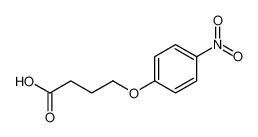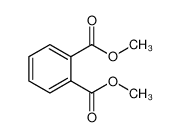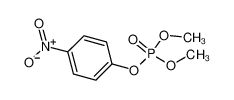1.Identification
1.1 GHS Product identifier
| Product name | parathion-methyl |
|---|
1.2 Other means of identification
| Product number | - |
|---|---|
| Other names | METHYL PARATHION |
1.3 Recommended use of the chemical and restrictions on use
| Identified uses | For industry use only. Organophosphates and carbamates |
|---|---|
| Uses advised against | no data available |
1.4 Supplier's details
| Company | MOLBASE (Shanghai) Biotechnology Co., Ltd. |
|---|---|
| Address | Floor 4 & 5, Building 12, No. 1001 North Qinzhou Road, Xuhui District, Shanghai, China |
| Telephone | +86(21)64956998 |
| Fax | +86(21)54365166 |
1.5 Emergency phone number
| Emergency phone number | +86-400-6021-666 |
|---|---|
| Service hours | Monday to Friday, 9am-5pm (Standard time zone: UTC/GMT +8 hours). |
2.Hazard identification
2.1 Classification of the substance or mixture
Flammable liquids, Category 3
Acute toxicity - Oral, Category 2
Acute toxicity - Dermal, Category 3
Acute toxicity - Inhalation, Category 2
Specific target organ toxicity – repeated exposure, Category 2
Hazardous to the aquatic environment, short-term (Acute) - Category Acute 1
Hazardous to the aquatic environment, long-term (Chronic) - Category Chronic 1
2.2 GHS label elements, including precautionary statements
| Pictogram(s) |     |
|---|---|
| Signal word | Danger |
| Hazard statement(s) | H226 Flammable liquid and vapour H300 Fatal if swallowed H311 Toxic in contact with skin H330 Fatal if inhaled H373 May cause damage to organs through prolonged or repeated exposure H410 Very toxic to aquatic life with long lasting effects |
| Precautionary statement(s) | |
| Prevention | P210 Keep away from heat, hot surfaces, sparks, open flames and other ignition sources. No smoking. P233 Keep container tightly closed. P240 Ground and bond container and receiving equipment. P241 Use explosion-proof [electrical/ventilating/lighting/...] equipment. P242 Use non-sparking tools. P243 Take action to prevent static discharges. P280 Wear protective gloves/protective clothing/eye protection/face protection. P264 Wash ... thoroughly after handling. P270 Do not eat, drink or smoke when using this product. P260 Do not breathe dust/fume/gas/mist/vapours/spray. P271 Use only outdoors or in a well-ventilated area. P284 [In case of inadequate ventilation] wear respiratory protection. P273 Avoid release to the environment. |
| Response | P303+P361+P353 IF ON SKIN (or hair): Take off immediately all contaminated clothing. Rinse skin with water [or shower]. P370+P378 In case of fire: Use ... to extinguish. P301+P310 IF SWALLOWED: Immediately call a POISON CENTER/doctor/… P321 Specific treatment (see ... on this label). P330 Rinse mouth. P302+P352 IF ON SKIN: Wash with plenty of water/... P312 Call a POISON CENTER/doctor/…if you feel unwell. P361+P364 Take off immediately all contaminated clothing and wash it before reuse. P304+P340 IF INHALED: Remove person to fresh air and keep comfortable for breathing. P310 Immediately call a POISON CENTER/doctor/… P320 Specific treatment is urgent (see ... on this label). P314 Get medical advice/attention if you feel unwell. P391 Collect spillage. |
| Storage | P403+P235 Store in a well-ventilated place. Keep cool. P405 Store locked up. P403+P233 Store in a well-ventilated place. Keep container tightly closed. |
| Disposal | P501 Dispose of contents/container to ... |
2.3 Other hazards which do not result in classification
none
3.Composition/information on ingredients
3.1 Substances
| Chemical name | Common names and synonyms | CAS number | EC number | Concentration |
|---|---|---|---|---|
| parathion-methyl | parathion-methyl | 298-00-0 | none | 100% |
4.First-aid measures
4.1 Description of necessary first-aid measures
General advice
Consult a physician. Show this safety data sheet to the doctor in attendance.
If inhaled
Fresh air, rest. Artificial respiration may be needed. Refer for medical attention.
In case of skin contact
Remove contaminated clothes. Rinse and then wash skin with water and soap. Refer for medical attention .
In case of eye contact
First rinse with plenty of water for several minutes (remove contact lenses if easily possible), then refer for medical attention.
If swallowed
Induce vomiting (ONLY IN CONSCIOUS PERSONS!). See Notes. Give a slurry of activated charcoal in water to drink. Refer immediately for medical attention.
4.2 Most important symptoms/effects, acute and delayed
This material is extremely toxic; the probable oral lethal dose is 5-50 mg/kg, or between 7 drops and 1 teaspoonful for a 150-lb. person. Chronic toxicity does not appear to be a major consideration. (EPA, 1998)
4.3 Indication of immediate medical attention and special treatment needed, if necessary
Immediate first aid: Ensure that adequate decontamination has been carried out. If patient is not breathing, start artificial respiration, preferably with a demand-valve resuscitator, bag-valve-mask device, or pocket mask, as trained. Perform CPR as necessary. Immediately flush contaminated eyes with gently flowing water. Do not induce vomiting. If vomiting occurs, lean patient forward or place on left side (head-down position, if possible) to maintain an open airway and prevent aspiration. Keep patient quiet and maintain normal body temperature. Obtain medical attention. /Organophosphates and related compounds/
5.Fire-fighting measures
5.1 Extinguishing media
Suitable extinguishing media
Suitable extinguishing media: Use water spray, alcohol-resistant foam, dry chemical or carbon dioxide. Advice for firefighters: Wear self contained breathing apparatus for fire fighting if necessary.
5.2 Specific hazards arising from the chemical
Poisonous gases are produced in fire and when heated. Decomposition may lead to sufficient internal pressure to cause the container to rupture violently. Avoid oxidizing materials. Unstable. High temperatures (120F) cause decomposition. (EPA, 1998)
5.3 Special protective actions for fire-fighters
Wear self-contained breathing apparatus for firefighting if necessary.
6.Accidental release measures
6.1 Personal precautions, protective equipment and emergency procedures
Use personal protective equipment. Avoid dust formation. Avoid breathing vapours, mist or gas. Ensure adequate ventilation. Evacuate personnel to safe areas. Avoid breathing dust. For personal protection see section 8.
6.2 Environmental precautions
Personal protection: chemical protection suit including self-contained breathing apparatus. Do NOT let this chemical enter the environment. Sweep spilled substance into covered containers. If appropriate, moisten first to prevent dusting. Carefully collect remainder. Then store and dispose of according to local regulations.
6.3 Methods and materials for containment and cleaning up
Personal precautions, protective equipment and emergency procedures: Wear respiratory protection. Avoid dust formation. Avoid breathing vapours, mist or gas. Ensure adequate ventilation. Evacuate personnel to safe areas. Avoid breathing dust. Environmental precautions: Prevent further leakage or spillage if safe to do so. Do not let product enter drains. Discharge into the environment must be avoided. Methods and materials for containment and cleaning up: Pick up and arrange disposal without creating dust. Sweep up and shovel. Keep in suitable, closed containers for disposal.
7.Handling and storage
7.1 Precautions for safe handling
Avoid contact with skin and eyes. Avoid formation of dust and aerosols. Avoid exposure - obtain special instructions before use.Provide appropriate exhaust ventilation at places where dust is formed. For precautions see section 2.2.
7.2 Conditions for safe storage, including any incompatibilities
Store in an area without drain or sewer access. Keep in a well-ventilated room. Separated from food and feedstuffs.Keep container tightly closed in a dry and well-ventilated place.
8.Exposure controls/personal protection
8.1 Control parameters
Occupational Exposure limit values
Recommended Exposure Limit: 10 Hour Time-Weighted Average: 0.2 mg/cu m, skin.
Biological limit values
no data available
8.2 Appropriate engineering controls
Handle in accordance with good industrial hygiene and safety practice. Wash hands before breaks and at the end of workday.
8.3 Individual protection measures, such as personal protective equipment (PPE)
Eye/face protection
Safety glasses with side-shields conforming to EN166. Use equipment for eye protection tested and approved under appropriate government standards such as NIOSH (US) or EN 166(EU).
Skin protection
Wear impervious clothing. The type of protective equipment must be selected according to the concentration and amount of the dangerous substance at the specific workplace. Handle with gloves. Gloves must be inspected prior to use. Use proper glove removal technique(without touching glove's outer surface) to avoid skin contact with this product. Dispose of contaminated gloves after use in accordance with applicable laws and good laboratory practices. Wash and dry hands. The selected protective gloves have to satisfy the specifications of EU Directive 89/686/EEC and the standard EN 374 derived from it.
Respiratory protection
Wear dust mask when handling large quantities.
Thermal hazards
no data available
9.Physical and chemical properties
| Physical state | white crystalline powder |
|---|---|
| Colour | Crystals |
| Odour | Pungent, garlic-like odor |
| Melting point/ freezing point | 36°C |
| Boiling point or initial boiling point and boiling range | 143°C (1.0 mmHg) |
| Flammability | Combustible SolidCombustible. Liquid formulations containing organic solvents may be flammable. Gives off irritating or toxic fumes (or gases) in a fire. |
| Lower and upper explosion limit / flammability limit | no data available |
| Flash point | 46.1°C |
| Auto-ignition temperature | 120°C (248 deg F) /Methyl parathion 80% in xylene/ |
| Decomposition temperature | 120°C |
| pH | no data available |
| Kinematic viscosity | no data available |
| Solubility | In water:0.005 g/100 mL |
| Partition coefficient n-octanol/water (log value) | log Kow = 2.86 |
| Vapour pressure | 9.7e-06 mm Hg at 20°C (EPA, 1998) |
| Density and/or relative density | 1.36 |
| Relative vapour density | 9.1 (Relative to Air) |
| Particle characteristics | no data available |
10.Stability and reactivity
10.1 Reactivity
no data available
10.2 Chemical stability
Hydrolyzes slowly in weak acid, rapidly in alkali
10.3 Possibility of hazardous reactions
METHYL PARATHION is half decomposed in 8 days at 40°C. When a sample was heated in a small test tube it decomposed in a few minutes and the residue exploded (Food Chem. 4(1):42. 1956).
10.4 Conditions to avoid
no data available
10.5 Incompatible materials
Strong oxidizers, water [Note: Explosive risk when heated above 122 degrees F].
10.6 Hazardous decomposition products
When heated to decomp it emits very toxic fumes of /nitrogen oxides, phosphorous oxides, and sulfur oxides/.
11.Toxicological information
Acute toxicity
- Oral: LD50 Mouse oral 18 mg/kg
- Inhalation: LC50 Mouse inhalation 120 mg/cu m/4 hr
- Dermal: LD50 Rat percutaneous 67 mg/kg
Skin corrosion/irritation
no data available
Serious eye damage/irritation
no data available
Respiratory or skin sensitization
no data available
Germ cell mutagenicity
no data available
Carcinogenicity
Cancer Classification: Not Likely to be Carcinogenic to Humans
Reproductive toxicity
no data available
STOT-single exposure
no data available
STOT-repeated exposure
no data available
Aspiration hazard
no data available
12.Ecological information
12.1 Toxicity
- Toxicity to fish: LC50; Species: /Oncorhynchus mykiss/ (rainbow trout) weight 1.1 g; Conditions: static bioassay, 12°C; Concentration: 3,700 ug/L for 96 hr (95% confidence limit 3,130-4,380 ug/L) /Technical material, 80-99%
- Toxicity to daphnia and other aquatic invertebrates: EC50; Species: Daphnia magna (daphnid) 1st instar; Conditions: static bioassay, 21°C; Concentration: 0.14 ug/L for 48 hr (95% confidence limit 0.09-0.20 ug/L); Effect: immobilization. /Technical material, 80-99%
- Toxicity to algae: EC50; Species: Anabaena inaequalis (Blue-Green Algae) age 3 days, exponential growth phase (Log) 1 X 10+5 Hormogonia/mL; Conditions: freshwater, static, 25°C, pH 7.5; Concentration: 19200 ug/L for 96 hr; Effect: population abundance /100% purity
- Toxicity to microorganisms: no data available
12.2 Persistence and degradability
Methyl parathion is degraded in soil, water and sediment(1,2). Products include aminomethylparathion, p-nitrophenol and O-methyl-O'-p-nitrophenylthiophosphoric acid(1). Biodegradation may be fairly rapid especially when microorganisms are acclimated to methyl parathion(2). Comparison of degradation rates in sterile versus nonsterile estuarine systems indicated that biodegradation was the primary route of methyl parathion degradation(3). In a die-away test using water and sediment cores from three sites (Escambia River, FL), methyl parathion had half-lives of 77 to 154 hrs, while in a sterile control the half-life was 367 hrs(4). In strongly reducing anaerobic sediments, the degradation rate was found to be about two orders of magnitude faster than in the same sediments which had been heat-sterilized(5). Biodegradation is significantly faster in sediment containing water than in water alone(4,5). 14C-Methyl parathion was degraded rapidly to carbon dioxide in Cecil sandy loam and Webster silty clay loam maintained at 10 and 33 kPa soil-water tension; >40% mineralization was observed in 14 days, leveling off to approximately 50% by day 28(6). After 32 days incubation in static sediment/water microcosms, 24% of the (14)C-methyl parathion had been mineralized to (14)CO2; degradation products included aminomethyl parathion, 4-aminophenol, and 4-nitrophenol(7).
12.3 Bioaccumulative potential
A BCF of 8.3 was determined for (14)C-methyl parathion in Oreochromis niloticus (Nile talapia) fingerlings(1). A BCF (calculated on an extractable lipid weight basis) of 959 was determined for methyl parathion in guppies (Poecilia reticulata)(2). According to a classification scheme(3), these BCF values suggest bioconcentration in aquatic organisms is low to high. However, methyl parathion does not bioconcentrate but rather is rapidly metabolized(4). An elimination rate constant of 2.38/day was measured(2), corresponding to a half-life of 7.0 hours(SRC). Methyl parathion was hydrolyzed by several shrimp and crayfish species(5).
12.4 Mobility in soil
Koc values of 366 to 423 were reported for methyl parathion(1). Average Koc values of 1,374 and 1,516 were measured for methyl parathion on 19 soil and sediment materials after 2 and 24 hours equilibration, respectively, using a batch equilibration technique; organic matter was the most important factor affecting adsorption of methyl parathion(2). According to a classification scheme(3), these Koc values suggest that methyl parathion is expected to have moderate to low mobility in soil.
12.5 Other adverse effects
no data available
13.Disposal considerations
13.1 Disposal methods
Product
The material can be disposed of by removal to a licensed chemical destruction plant or by controlled incineration with flue gas scrubbing. Do not contaminate water, foodstuffs, feed or seed by storage or disposal. Do not discharge to sewer systems.
Contaminated packaging
Containers can be triply rinsed (or equivalent) and offered for recycling or reconditioning. Alternatively, the packaging can be punctured to make it unusable for other purposes and then be disposed of in a sanitary landfill. Controlled incineration with flue gas scrubbing is possible for combustible packaging materials.
14.Transport information
14.1 UN Number
| ADR/RID: UN2052 | IMDG: UN2052 | IATA: UN2052 |
14.2 UN Proper Shipping Name
| ADR/RID: DIPENTENE |
| IMDG: DIPENTENE |
| IATA: DIPENTENE |
14.3 Transport hazard class(es)
| ADR/RID: 6.1(a) | IMDG: 6.1(a) | IATA: 6.1(a) |
14.4 Packing group, if applicable
| ADR/RID: II | IMDG: II | IATA: II |
14.5 Environmental hazards
| ADR/RID: yes | IMDG: yes | IATA: yes |
14.6 Special precautions for user
no data available
14.7 Transport in bulk according to Annex II of MARPOL 73/78 and the IBC Code
no data available
15.Regulatory information
15.1 Safety, health and environmental regulations specific for the product in question
| Chemical name | Common names and synonyms | CAS number | EC number |
|---|---|---|---|
| parathion-methyl | parathion-methyl | 298-00-0 | none |
| European Inventory of Existing Commercial Chemical Substances (EINECS) | Listed. | ||
| EC Inventory | Listed. | ||
| United States Toxic Substances Control Act (TSCA) Inventory | Not Listed. | ||
| China Catalog of Hazardous chemicals 2015 | Listed. | ||
| New Zealand Inventory of Chemicals (NZIoC) | Not Listed. | ||
| Philippines Inventory of Chemicals and Chemical Substances (PICCS) | Listed. | ||
| Vietnam National Chemical Inventory | Not Listed. | ||
| Chinese Chemical Inventory of Existing Chemical Substances (China IECSC) | Listed. | ||
16.Other information
Information on revision
| Creation Date | Aug 20, 2017 |
|---|---|
| Revision Date | Aug 20, 2017 |
Abbreviations and acronyms
- CAS: Chemical Abstracts Service
- ADR: European Agreement concerning the International Carriage of Dangerous Goods by Road
- RID: Regulation concerning the International Carriage of Dangerous Goods by Rail
- IMDG: International Maritime Dangerous Goods
- IATA: International Air Transportation Association
- TWA: Time Weighted Average
- STEL: Short term exposure limit
- LC50: Lethal Concentration 50%
- LD50: Lethal Dose 50%
- EC50: Effective Concentration 50%
References
- IPCS - The International Chemical Safety Cards (ICSC), website: http://www.ilo.org/dyn/icsc/showcard.home
- HSDB - Hazardous Substances Data Bank, website: https://toxnet.nlm.nih.gov/newtoxnet/hsdb.htm
- IARC - International Agency for Research on Cancer, website: http://www.iarc.fr/
- eChemPortal - The Global Portal to Information on Chemical Substances by OECD, website: http://www.echemportal.org/echemportal/index?pageID=0&request_locale=en
- CAMEO Chemicals, website: http://cameochemicals.noaa.gov/search/simple
- ChemIDplus, website: http://chem.sis.nlm.nih.gov/chemidplus/chemidlite.jsp
- ERG - Emergency Response Guidebook by U.S. Department of Transportation, website: http://www.phmsa.dot.gov/hazmat/library/erg
- Germany GESTIS-database on hazard substance, website: http://www.dguv.de/ifa/gestis/gestis-stoffdatenbank/index-2.jsp
- ECHA - European Chemicals Agency, website: https://echa.europa.eu/




















-
-

-
-
-

-
-
-

-
-
-

-
-
-

-
-
-

-
-
-

-
-
-

-
-
-

-
-
-

-
More Suppliers>>Hangzhou J&H Chemical Co., Ltd.
CHINA
Purity: 98%
Lead Time: 3 Day(s)
Price: -
Guizhou Dida science and technology co., LTD
CHINA
Purity: 98%
Lead Time: 3 Day(s)
Price: -
Shanghai Yusi Chemical Co., Ltd.
CHINA
Purity: 100%
Lead Time: 10 Day(s)
Price: Min $26.5 /ml
Chengdu SinoStandards Bio-Tech Co.,Ltd.
CHINA
Purity: 98%
Lead Time: 7 Day(s)
Price: -
Tianjin Xima Technology Co., Ltd.
CHINA
Purity: 96%
Lead Time: 7 Day(s)
Price: -
Shenzhen Yajiaite Industrial Co., Ltd.
CHINA
Purity: 95%
Lead Time: 7 Day(s)
Price: -
Duyishengwukeji(shanghai)youxiangongsi
CHINA
Purity: 98%
Lead Time: 1 Day(s)
Price: -
Ningbo Agro-star Industrial Co., Ltd.
CHINA
Purity: 96%
Lead Time: 7 Day(s)
Price: -
Nantong Kaibeisi Trading Co., Ltd.
CHINA
Purity: 96%
Lead Time: 7 Day(s)
Price: -
Nanjing Bori International Industry and Trade Co., Ltd.
CHINA
Purity: 95%
Lead Time: 7 Day(s)
Price: -